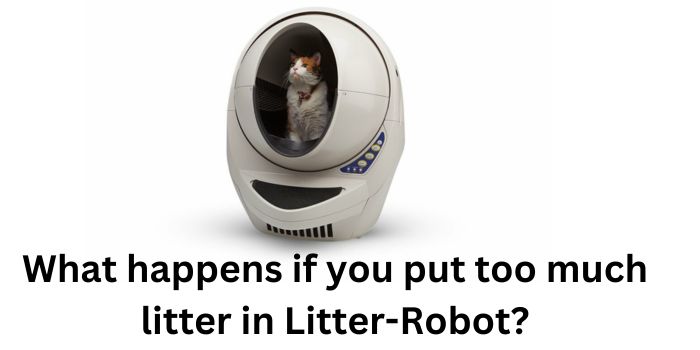Cats are meticulous animals by nature and desire a clean litter box. A dirty litter box can usher to health issues for your cat, such as urinary tract infections or stress-related problems. The Litter Robot is a self-cleaning litter box that automatically filters and removes clumps of waste, ensuring a consistently clean environment for your cat. This minimizes the necessity for manual scooping, which can be time-consuming and unpleasant.
The Litter-Robot rotates to sift the litter and keep the environment or surroundings of your house clean. It has a control panel where you can fix the cleaning cycle timer and adjust other settings. When your cat enters the Litter-Robot and exits after using it, the sensors activate the cleaning cycle. Some advanced models of the Litter Robot are equipped with sensors that can observe your cat’s litter box usage. This feature can aid you in detecting changes in your cat’s behavior or health more quickly. After going through this, you will study what happens if you put too much litter in the litter robot and how to avoid potential issues.
What happens with too much litter
Let’s explore what happens if you put too much litter in the litter robot:
-
Reduce the efficiency of the motor
The Litter Robot functions by sifting through the litter and dividing the clumps of waste from the clean litter. If there’s too much litter, it might not be able to do this effectively. It can miss some clumps, leaving them behind. Too much litter can make the litter box heavier than it should be. This extra weight can weaken the robot’s motor and mechanisms, potentially leading to wear and tear over time. Furthermore, more litter means your cat is more likely to spread it around the house. The Litter Robot can help reduce this, but if there’s too much litter, it’s formidable for the robot to contain it all.
-
Decreases the lifespan of your box
All that extra litter produces more friction and resistance as the litter box tries to rotate and takes more effort. This extra strain can wear down the motor over time. Just like any other machine, the motor in your Litter Robot has a limited lifespan. When it’s constantly functioning against the extra weight and resistance provoked by too much litter, it might not last as long as it should.
-
Blockage and jams
The motor in your Litter Robot can encounter a jam when there’s too much litter. The motor is devised to handle a specific amount of litter, but when it’s overloaded, it can stumble to turn the litter box, ushering to a jam. Follow the manufacturer’s recommendations for the appropriate amount of litter to use. When there’s too much litter, waste clumps may become bigger and thicker. These large clumps can be formidable for the Litter Robot to split apart during the sifting process, leading to blockages or jams.
-
Your cat might stop using the litter robot
Cats are choosy about their bathroom experience, and they desire a comfortable, spacious area to do their business. When there’s an extra litter, the open space inside the litter box shrinks. Your cat might find it discomfiting to dig, move around, and bury their waste. Too much litter can spread over the sides of the litter box, assembling a mess around the entrance and exit. Your cat might not enter through this litter mess, making them unwilling to use the box.
-
Odor accumulation
When there’s an excess of litter, it fills up most of the space inside the Litter Robot. This leaves less room for air to circulate through the litter. Excessive litter can also retain more moisture from your cat’s waste. This moisture blends with the trapped odors, forming an environment where bacteria can grow. Most litter boxes, including the Litter Robot, have features designed to control odors, such as carbon filters. But when there’s too much litter, these features might not function as effectively because they can’t address the trapped odors deep within the litter.
The Litter-Robot is a useful accessory to any cat owner’s home, but it’s compulsory to utilize it correctly to relish its benefits fully. Avoid loading too much litter in the Litter-Robot to eliminate reduced effectiveness, motor strain, jams, and odor accumulation. By obeying manufacturer guidelines and executing regular maintenance, you can ensure that your litter robot continues to supply a clean and hassle-free environment for your cat.
Keep an eye on the litter levels in the litter robot. If you see that it’s consistently struggling to function or the cleaning cycle is incomplete, reduce the amount of litter you’re adding. Moreover, some litter robots monitor litter levels. Search for automatic litter boxes for cats on the internet and get one for your cat today!
